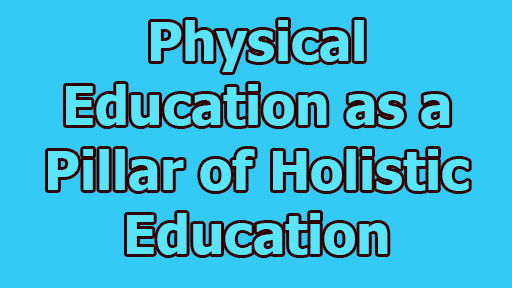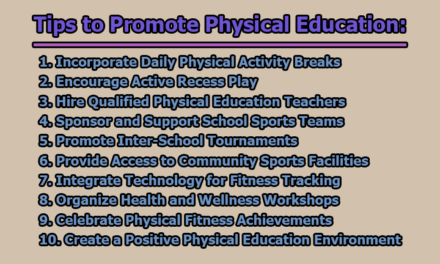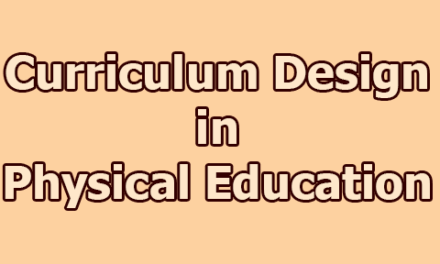The pursuit of education goes beyond the mere transmission of knowledge. It is an endeavor to mold individuals into well-rounded beings capable of navigating life’s complexities with competence and resilience. To achieve this, holistic education has emerged as a guiding principle, emphasizing the development of the whole person – intellectually, emotionally, socially, and physically. Among the multifaceted components that contribute to holistic development, Physical Education (PE) stands as a critical pillar, nurturing not only the body but also the mind and spirit. This article explores Physical Education as a pillar of holistic education.
Holistic Education Defined:
Holistic education is a comprehensive educational philosophy that recognizes students as complex beings with a multitude of needs extending beyond academic learning (Miller, 2000). It seeks to address these multifaceted needs, fostering personal growth, self-awareness, emotional intelligence, and a sense of purpose (Palmer, 2007). In the holistic education paradigm, the aim is not just to produce academically proficient individuals, but also to develop well-rounded, socially responsible, and emotionally intelligent citizens (Miller, 2000). This approach acknowledges that education is not confined to textbooks and classrooms; instead, it encompasses all aspects of life. As a result, holistic education integrates various subjects and activities to create a comprehensive learning experience that prepares students for the intricacies of the real world.
Physical Education as a Pillar of Holistic Education:
Physical education, often abbreviated as PE, is a fundamental component of holistic education due to its multifaceted contributions to personal development (Gabbard, 2012). Here, we will delve into each of these dimensions to underline the significance of PE in holistic education:
1. Physical Fitness and Health: Perhaps the most apparent benefit of physical education is the promotion of physical fitness and overall health (Caspersen, Powell, & Christenson, 1985). Regular physical activity is crucial for maintaining a healthy body weight, cardiovascular health, muscle strength, and bone density. Engaging in PE activities, ranging from sports to yoga or aerobics, instills lifelong habits of physical activity, reducing the risk of various health conditions such as obesity, diabetes, and heart disease (American Heart Association, n.d.).
2. Emotional Well-being and Stress Management: Physical education significantly impacts emotional well-being (Donnelly & Lambourne, 2011). Engaging in physical activities releases endorphins, which are natural mood enhancers. PE provides an outlet for stress and pent-up emotions, enabling students to cope effectively with the demands of academic life and personal challenges. Moreover, it fosters self-confidence and self-esteem as students achieve physical milestones and improve their skills (Lubans et al., 2016).
3. Social Skills and Teamwork: PE serves as a fertile ground for nurturing social skills and teamwork (Durlak et al., 2011). Many physical activities, such as team sports, necessitate collaboration, communication, and problem-solving. This interaction cultivates robust interpersonal skills and imparts the values of cooperation and respect for others, which are essential life skills (Aspen Institute, 2018).
4. Cognitive Development and Academic Performance: Contrary to common belief, physical education is not confined to the body; it also stimulates cognitive growth (Hillman et al., 2008). Research has shown that regular physical activity enhances cognitive functions, including memory, attention, and problem-solving. It improves concentration and mental clarity, factors that can significantly impact academic performance (CDC, n.d.).
5. Lifelong Learning and Healthy Habits: Physical education instills a genuine passion for physical activity and sports, motivating students to pursue an active lifestyle throughout their lives (Telama et al., 2015). This emphasis on lifelong learning promotes holistic development by encouraging a growth mindset and a commitment to self-improvement. Students learn not only the importance of staying physically active but also the joy and fulfillment it can bring over a lifetime.
6. Character Building and Values Education: Physical education provides a unique platform for character development, emphasizing values such as discipline, perseverance, and fair play (NASPE, 2009). Students set goals, overcome challenges, and learn to display good sportsmanship – qualities that translate into ethical and responsible citizenship. These values, imbibed through PE, contribute significantly to the holistic development of individuals.
7. Nutritional Awareness and Healthy Eating Habits: Physical education programs often incorporate discussions about nutrition and healthy eating habits (Jones & Johnson, 2016). Understanding the importance of a balanced diet and making informed choices regarding food is essential for overall well-being. PE teachers can help students develop a holistic approach to health by educating them about the relationship between physical activity and nutrition.
8. Mind-Body Connection: PE fosters a profound understanding of the mind-body connection (Ratey, 2008). Through activities like yoga and mindfulness exercises, students learn to tune into their bodies, manage stress, and enhance mental well-being. These practices empower individuals to navigate life’s challenges with greater emotional resilience and self-awareness.
9. Cultural and Social Awareness: Physical education often includes exposure to a variety of sports and activities from different cultures (Ennis, 2016). This not only broadens students’ horizons but also promotes cultural and social awareness. Learning about the history and traditions associated with various physical activities contributes to a well-rounded education that embraces diversity.
10. Inclusivity and Adaptability: PE programs emphasize inclusivity and adaptability (Block & Burns, 2017). Inclusive physical education ensures that students of all abilities and backgrounds can participate and succeed. This promotes empathy, respect, and a sense of community, fostering holistic development by teaching students to appreciate differences and work collaboratively with diverse peers.
11. Conflict Resolution and Sportsmanship: PE provides opportunities for conflict resolution and the development of good sportsmanship (Martens & Vealey, 2019). In competitive sports, students learn to manage conflicts, handle both victory and defeat graciously, and uphold fair play. These values extend beyond the sports field, contributing to ethical character development.
12. Environmental Awareness: Many physical education programs incorporate outdoor activities and environmental education (Hart, 2019). Engaging with nature fosters an appreciation for the environment and encourages responsible stewardship. It aligns with the holistic education ethos of nurturing a sense of interconnectedness with the natural world.
13. Leadership and Initiative: Through team sports and group activities, physical education cultivates leadership skills and initiative (Gould & Carson, 2008). Students often take on roles as captains, team leaders, or organizers, allowing them to develop leadership qualities such as communication, decision-making, and problem-solving.
14. Time Management and Goal Setting: Participation in PE teaches students valuable skills related to time management and goal setting (Anshel & Kang, 2007). Balancing academics with physical activities requires effective time management, and setting fitness goals encourages students to pursue self-improvement and track progress.
15. Life Skills for Independence: PE programs equip students with life skills that promote independence and self-sufficiency (Casey & Goodyear, 2015). These skills may include first aid, basic survival skills, and self-defense techniques. Such knowledge contributes to students’ sense of self-efficacy and preparedness for real-life situations.
In conclusion, in the pursuit of holistic education, physical education emerges as an indispensable and multifaceted pillar. Its contributions span across various dimensions, nurturing individuals who are not just academically proficient but also physically fit, emotionally resilient, socially adept, and mentally agile. PE is not a mere exercise routine; it is an integral component of education that nurtures both minds and bodies, promoting lifelong well-being and instilling values that shape responsible citizens. As educators and policymakers strive to enhance educational systems worldwide, it is crucial to recognize the pivotal role that physical education plays in achieving holistic education goals. Schools must allocate adequate time, resources, and emphasis on PE to ensure that students receive a comprehensive education that addresses their physical, emotional, and social needs.
References:
- American Heart Association. (n.d.). Physical Activity Improves Quality of Life. https://www.heart.org/en/healthy-living/fitness/fitness-basics/why-is-physical-activity-so-important-for-health-and-wellbeing
- Anshel, M. H., & Kang, M. (2007). Effectiveness of Self-Regulation on Exercise Performance. Journal of Applied Sport Psychology, 19(4), 486-499.
- Aspen Institute. (2018). Sport for All, Play for Life: A Playbook to Get Every Kid in the Game.
- Block, M. E., & Burns, D. J. (2017). Inclusion: Effective Practices for All Students. Pearson.
- Caspersen, C. J., Powell, K. E., & Christenson, G. M. (1985). Physical activity, exercise, and physical fitness: Definitions and distinctions for health-related research. Public Health Reports, 100(2), 126-131.
- Casey, A., & Goodyear, V. A. (2015). Can’t, Don’t or Won’t? Teachers’ Views on Including Children with Autism Spectrum Disorders. International Journal of Disability, Development and Education, 62(2), 121-138.
- CDC (Centers for Disease Control and Prevention). (n.d.). The Association Between School-Based Physical Activity, Including Physical Education, and Academic Performance. https://www.cdc.gov/healthyschools/physicalactivity/facts.htm
- Donnelly, J. E., & Lambourne, K. (2011). Classroom-based physical activity, cognition, and academic achievement. Preventive Medicine, 52(Suppl 1), S36-S42.
- Durlak, J. A., Weissberg, R. P., Dymnicki, A. B., Taylor, R. D., & Schellinger, K. B. (2011). The impact of enhancing students’ social and emotional learning: A meta-analysis of school-based universal interventions. Child Development, 82(1), 405-432.
- Ennis, C. D. (2016). Introduction to Sport Education. Routledge.
- Gabbard, D. (2012). Lifelong motor development. Pearson Higher Ed.
- Gould, D., & Carson, S. (2008). Life Skills Development Through Sport: Current Status and Future Directions. International Review of Sport and Exercise Psychology, 1(1), 58-78.
- Hart, J. (2019). Outdoor Education in Girl Scouting: A Grounded Theory Approach. Journal of Outdoor Recreation, Education, and Leadership, 11(2), 109-124.
- Hillman, C. H., Erickson, K. I., & Kramer, A. F. (2008). Be smart, exercise your heart: Exercise effects on brain and cognition. Nature Reviews Neuroscience, 9(1), 58-65.
- Jones, L., & Johnson, T. G. (2016). Nutrition Education in Physical Education: Ideas for Practicing Teachers. The Physical Educator, 73(1), 92-108.
- Lubans, D., Richards, J., Hillman, C., Faulkner, G., Beauchamp, M., Nilsson, M., Kelly, P., Smith, J., & Raine, L. (2016). Physical Activity for Cognitive and Mental Health in Youth: A Systematic Review of Mechanisms. Pediatrics, 138(3), e20161642. https://pediatrics.aappublications.org/content/138/3/e20161642
- Martens, R., & Vealey, R. S. (2019). Successful Coaching. Human Kinetics.
- Miller, J. P. (2000). Education and the soul: Toward a spiritual curriculum. Albany: State University of New York Press.
- NASPE (National Association for Sport and Physical Education). (2009). Code of Ethics.
- Palmer, P. J. (2007). The courage to teach: Exploring the inner landscape of a teacher’s life. John Wiley & Sons.
- Ratey, J. J. (2008). Spark: The Revolutionary New Science of Exercise and the Brain. Little, Brown Spark.
- Telama, R., Yang, X., Viikari, J., Välimäki, I., Wanne, O., Raitakari, O., & Kähönen, M. (2015). Physical activity from childhood to adulthood: A 21-year tracking study. American Journal of Preventive Medicine, 28(3), 267-273.

Library Lecturer at Nurul Amin Degree College










